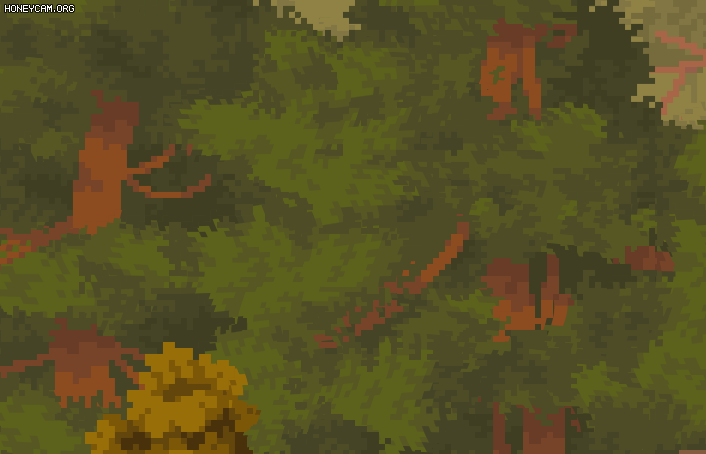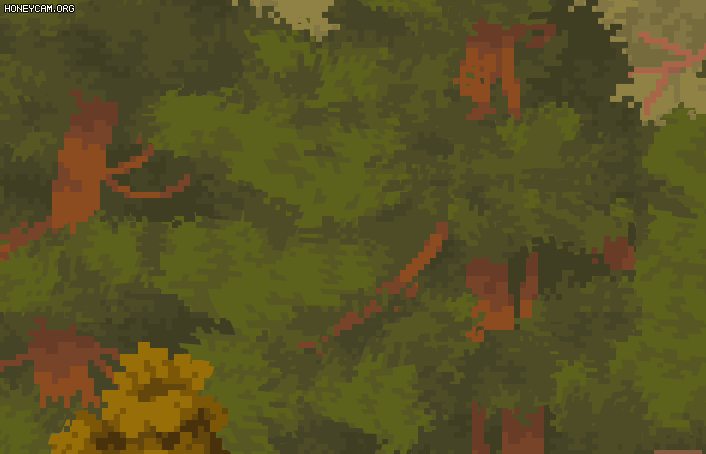time.x is constant (1.0) so in this case I expected texture to not wave, but actually it is not moving only when camera is not moving. When I pass time updated every frame it waves, but the dependence on position of camera is still:

When time.x is constant it is very noticable, as below. uv is simply a texel coord that is modified here, and that’s why the effect is depending on the movement of camera, that changes what is on the displayed quad (the above code is part of my quad fp). Moving in y direction is also altering the picture:

I do see why the effect is dependent on the camera, but I am looking for a solution how to make it independent. I believe I need to pass some offset maybe, every frame to the fp, but I don’t know how to make such offset.
It is of course related to my previous attempt, but that one was basing on vp, so I would need quads for each bush or grass sprite. In this one I wanted to do calculations in fp when drawing those green colors on screen - modify its coords (then pixelate it, but it’s not important now).